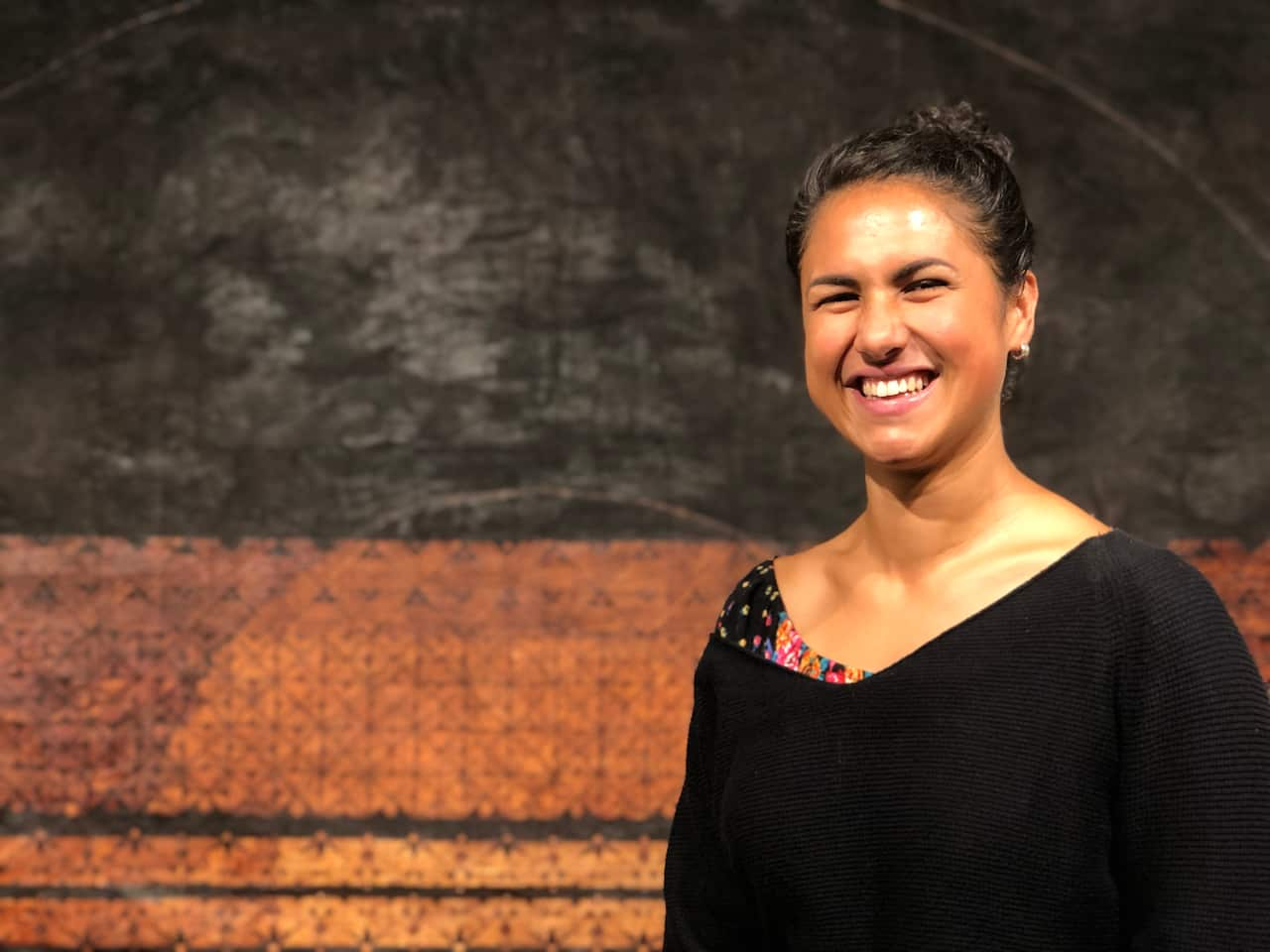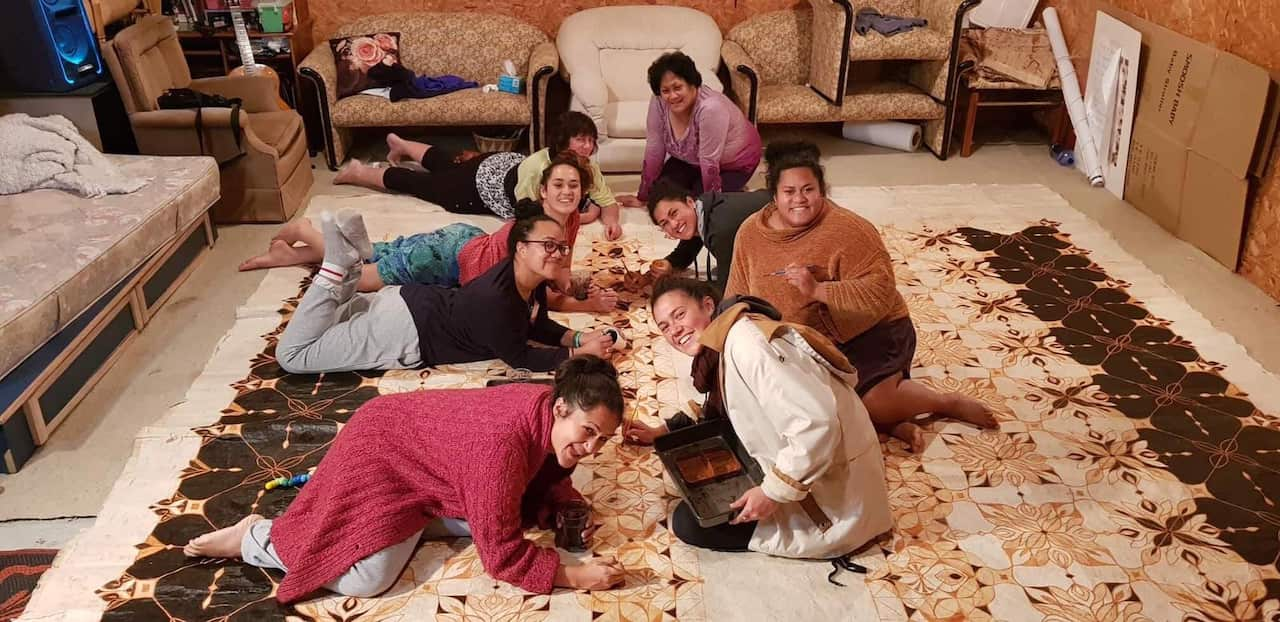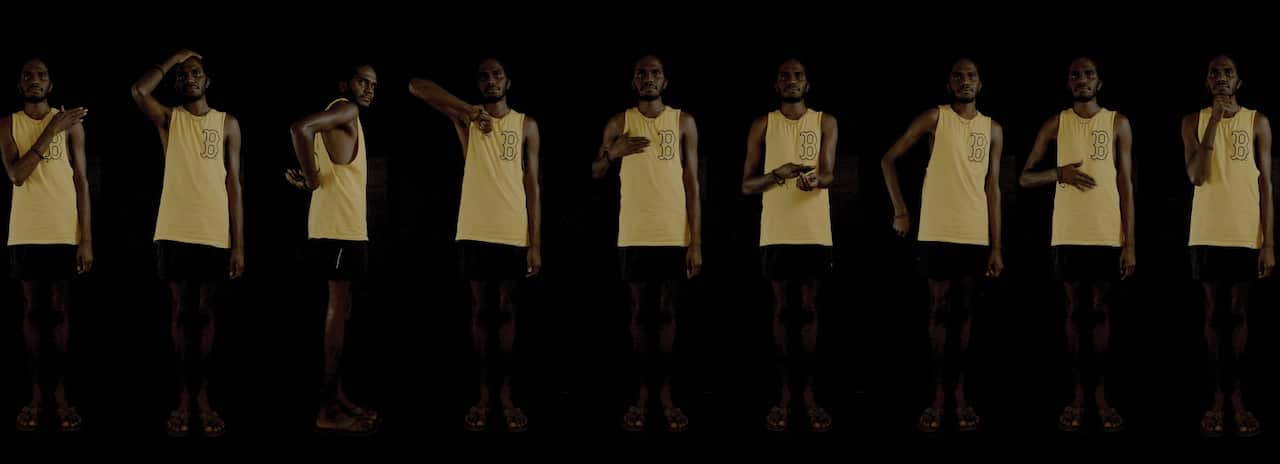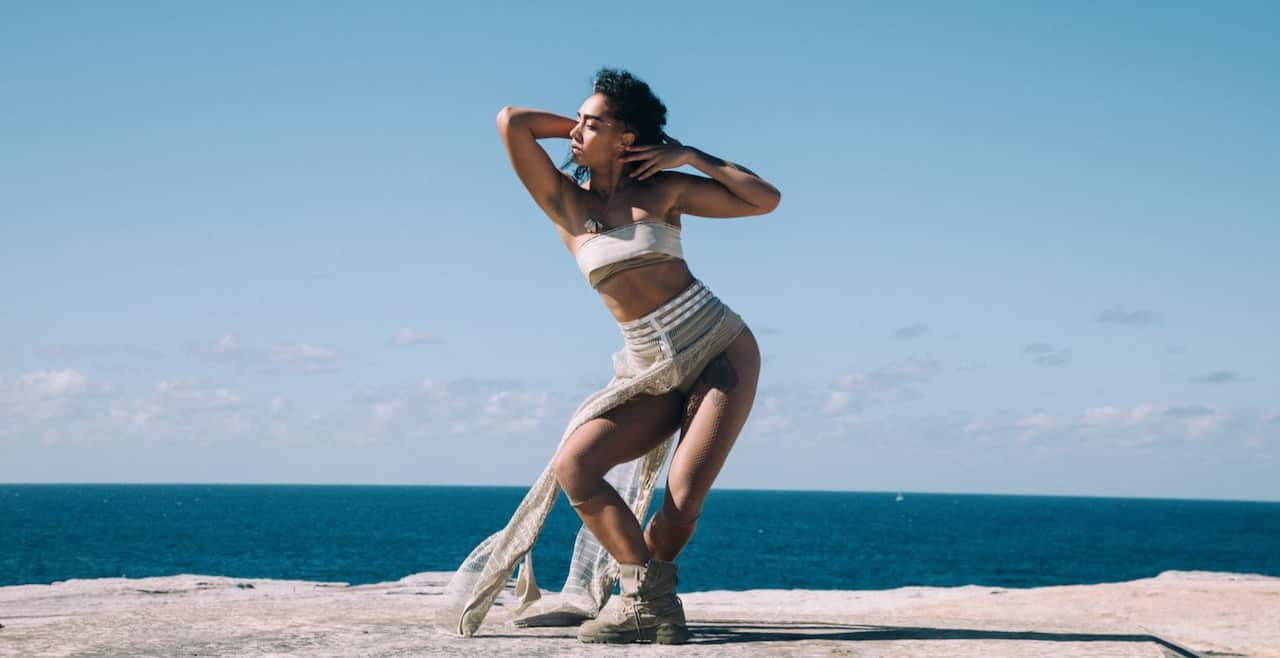Emerging artist Shivanjani Lal believes the whole world should be talking about the Pacific Islands right now.
"Some of the conversations that are happening in the Pacifics are very important, in terms of climate change, in terms of Indigenous relationships, in terms of how these communities hold an account of history," she told SBS News.
In January, climate change took centre stage at a gathering of Asian-Pacific nations in Canberra, with one delegate calling for Australia to take more leadership against the "existential threat".
Lal has created two new artworks that she hopes will spark conversations for an Australian-first exhibition that honours the Pacific Islands and First Nations people.
Wansolwara: One Salt Water is a series of exhibitions, performances and events from across the Pacific and throughout the Great Ocean. Wansolwara is a pidgin word from the Solomon Islands which means One Salt Water or "one ocean, one people".
“There’s such a breadth of diversity among Pacifics people and it’s nice to be under one roof," Lal told SBS News, at UNSW Galleries in Sydney where the exhibition is held. “As an Indo-Fijian person, it was really a wonderful opportunity to share the diversity that is the pacific,” she said.
“As an Indo-Fijian person, it was really a wonderful opportunity to share the diversity that is the pacific,” she said.

Shivanjani Lal is a twice-removed Fijian-Indian-Australian artist and curator. She has two works in the exhibition. Source: SBS News
“It was a chance to start making work that centred around my relationship with Fiji as opposed to my Indian heritage.”
One exhibit features a row of Australian Hemisphere maps on brown paper, Lal has then stitched into them all the possible routes of migrant ships from India to Fiji. The red stitching represents her bloodline. Tongan artist Ruha Fifita agreed there is no better time to be talking about the pacific than now.
Tongan artist Ruha Fifita agreed there is no better time to be talking about the pacific than now.

Artist Ruha Fifita and her siblings have developed a practice centred on collaboration and community building. Source: SBS News
She has spent years studying the ocean and how it rises.
It inspired the concept for one of her latest artworks - the traditional Tongan cloth Ngatu.
Ngatu is a long and dedicated process. The bark from the mulberry tree used to make it took decades to grow. As Tongans always do, when Fifita was ready to create it, she called on her family and friends.
As Tongans always do, when Fifita was ready to create it, she called on her family and friends.

Ruha Fifita and her siblings and friends creating the family heirloom. Source: Supplied
“It’s so much more than the end product – you know there are shared values, belief systems maintained through these practices,” she told SBS News.
Together with her family and friends, Fifita has created two pieces on show at the Sydney exhibition.
One Ngatu is intended to be a family heirloom. Fifita said it tells the story of inter-generational learning and keeping cultural traditions alive across generations.
“Many of us come from mixed racial backgrounds and to be given the licence to look at our ancestry was so special," she said.
The other artwork is research-based. The idea came to her in 2016 when Pacific countries launched the Year of the Whale.

Gutiŋarra Yunupiŋu, Garrutu’mi Mala – My connections 2019. Source: the artist and Buku-Larrŋgay Mulka Centre
UNSW Galleries Director José Da Silva said through art, performance and conversation, Wansolwara: One Salt Water , celebrates the depth and diversity of culture throughout these regions.
"It reflects a waterscape that contains within it distinct and diverse knowledge and practices," he said.
Fifita said as the world becomes more interconnected, it was time Australia got to better know its neighbours: the Pacific Islands.
“I definitely feel the term ‘one ocean’ speaks to the pacific but you can also extend it to the globe," she said.
“Now, even within one person, there are so many mixes [cultures].”
”[We need to] adjust our own expectations of family and belief to encompass a sense of family that absorbs everyone’s values and seeking tolerance as much as possible about our neighbours.” Renowned choreographer and performer Amrita Hepi has also taken part in the exhibition. Her piece is called a 'Body of Work: At the End of the Earth'.
Renowned choreographer and performer Amrita Hepi has also taken part in the exhibition. Her piece is called a 'Body of Work: At the End of the Earth'.

Amrita Hepi, A Body of Work, 2019. Source: Supplied
It's a series of four moving portraits of professional dancers and performance artists. “Each of the people in these videos is a First Nations person," she said.
"I think they’re more to the spirit of that person rather than solely their identity. Each one of these people is, yes they are first nations, but they also belong to a spectrum of communities and I don’t think they exist solely as a singularity of necessarily just their identity – they’re part of dance communities, they’re part of art communities, they’re mothers, they’re fathers, they’re at an intersection of many, many things.
"I think this is my attempt to capture, I guess, one part of their dance process but also to the hybridity of their beings.”
Wansolwara: One Salt Water runs until April 18 at UNSW Galleries, Sydney.










